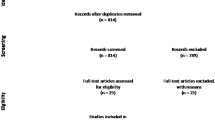Abstract
Aim
To identify factors that predict which children with amblyopia are at greatest risk of regression of visual acuity (VA) following the cessation of occlusion therapy.
Method
A retrospective analysis was performed of 182 children (mean age at cessation of treatment; 5.9±1.6 years) who had undergone occlusion therapy for unilateral amblyopia, and had been followed up at least once within 15 months of cessation. Statistical analysis was used to identify whether change in VA following treatment cessation had any association with various factors, including the child’s age, type of amblyopia, degree of anisometropia, initial severity of amblyopia, binocular vision status, length and dose of occlusion therapy, and VA response to treatment.
Results
At 1 year, follow-up from treatment cessation, children with “mixed” amblyopia (both anisometropia and strabismus) demonstrated significantly (p=0.03) greater deterioration in VA (0.11±0.11 log units) than children with only anisometropia (0.02±0.08 log units) or only strabismus (0.05±0.10 log units). However, none of the other factors investigated were found to be significant predictors.
Conclusion
This study supports previous research that it is possible to identify those children most at risk of deterioration in VA following cessation of occlusion therapy. The presence of mixed amblyopia was the only risk factor identified in this study. Management of amblyopia should take this into account, with a more intensive follow-up recommended for those with both anisometropia and strabismus (mixed) amblyopia.


Similar content being viewed by others
References
Ching FC, Parks MM, Friendly DS (1986) Practical management of amblyopia. J Pediatr Ophthalmol Strabismus 23:12–16
Hubel DH, Wiesel TN (1970) The period of susceptibility to the physiological effects of unilateral eye closure in kittens. J Physiol (London) 206:419–436
Leiba H, Shimshoni M, Oliver M, Gottesman N, Levartovsky S (2001) Long-term follow-up of occlusion therapy in amblyopia. Ophthalmology 108:1552–1555
Levartovsky S, Gottesman N, Shimshoni M, Oliver M (1992) Factors affecting long-term results of successfully treated amblyopia: age at beginning of treatment and age at cessation of monitoring. J Pediatr Ophthalmol Strabismus 29:219–223
Levartovsky S, Oliver M, Gottesman N, Shimshoni M (1995) Factors affecting long-term results of successfully treated amblyopia: initial visual acuity and type of amblyopia. Br J Ophthalmol 79:225–228
Levartovsky S, Oliver M, Gottesman N, Shimshoni M (1998) Long-term effect of hypermetropic anisometropia on the visual acuity of treated amblyopic eyes. Br J Ophthalmol 82:55–58
Malik SRK, Singh Virdi P, Goel BK (1975) Follow-up results of occlusion and pleoptic treatment. Acta Opthalmol (Copenh) 53:620–626
Ohlsson J, Baumann M, Sjostrand J, Abrahamsson M (2002) Long-term visual outcome in amblyopia treatment. Br J Ophthalmol 86:1148–1151
Oster J, Simon JW, Jenkins P (1990) When is it safe to stop patching? Br J Ophthalmol 74:709–711
Pediatric Eye Disease Investigator Group (2002) A randomised trial of atropine vs. patching for treatment of moderate amblyopia in children. Arch Ophthalmol 120:268–278
Pediatric Eye Disease Investigator Group (2003) A randomized trial of patching regimens for treatment of moderate amblyopia in children. Arch Ophthalmol 121:603–611
Pediatric Eye Disease Investigator Group (2003) A randomized trial of prescribed patching regimens for treatment of severe amblyopia in children. Ophthalmology 110:2075–2087
Pediatric Eye Disease Investigator Group (2004) Risk of amblyopia recurrence after cessation of treatment. J AAPOS 8:420–428
Rahi JS, Logan S, Timms C, Russell-Eggitt I, Taylor D (2002) Risk, causes and outcomes of visual impairment after loss of vision in the non-amblyopic eye: a population-based study. Lancet 360:597–602
Reeves B (2002) Taxonomy and epidemiology of amblyopia. In: Moseley MJ, Fielder AR (eds) Amblyopia: a multidisciplinary approach. Butterworth-Heinemann, Oxford, pp 68–80
Acknowledgements
We are grateful to the staff of the Records and Research & Development Departments, and Eye Clinics (in particular Tricia Rice, Rowena McNamara & Avril Charnock) of Hillingdon and St Mary’s hospitals, London for their help with this study.
Author information
Authors and Affiliations
Corresponding author
Rights and permissions
About this article
Cite this article
Tacagni, D.J., Stewart, C.E., Moseley, M.J. et al. Factors affecting the stability of visual function following cessation of occlusion therapy for amblyopia. Graefe's Arch Clin Exp Ophthalmol 245, 811–816 (2007). https://doi.org/10.1007/s00417-006-0395-2
Received:
Revised:
Accepted:
Published:
Issue Date:
DOI: https://doi.org/10.1007/s00417-006-0395-2




